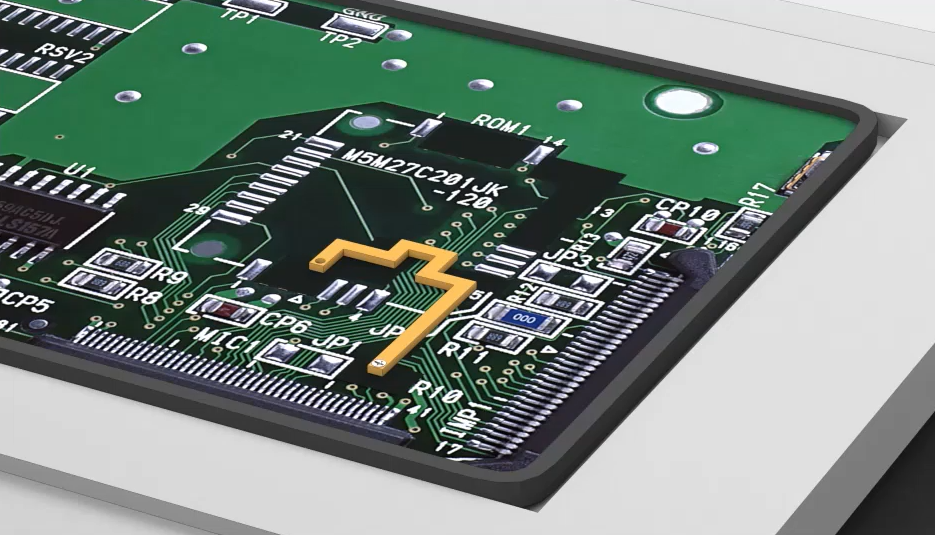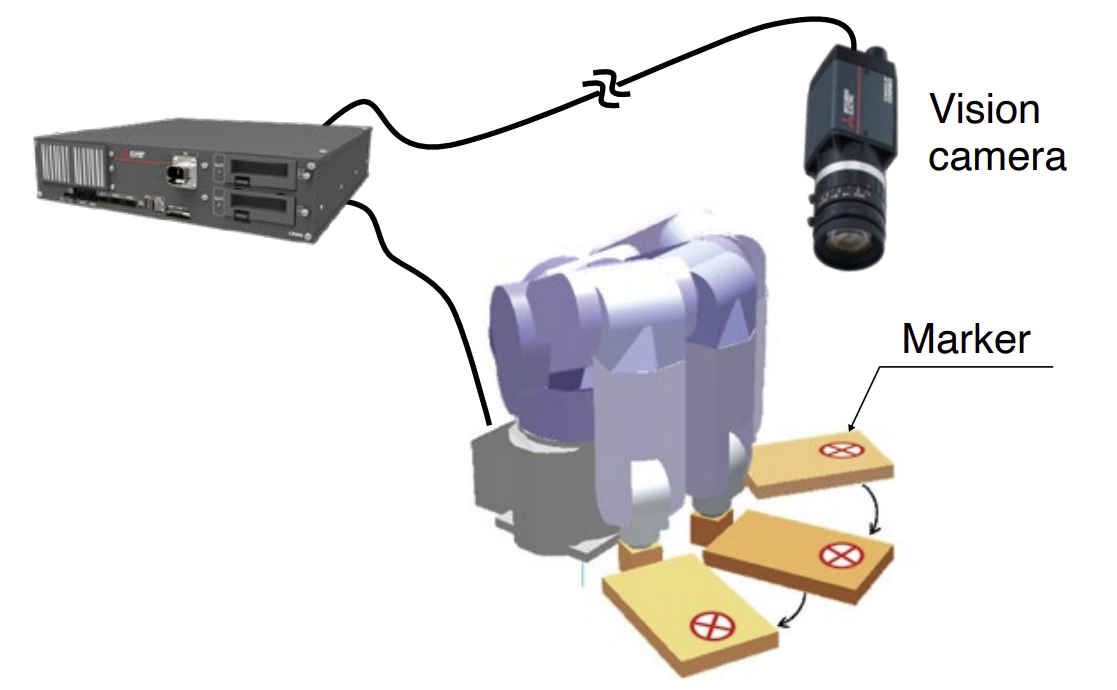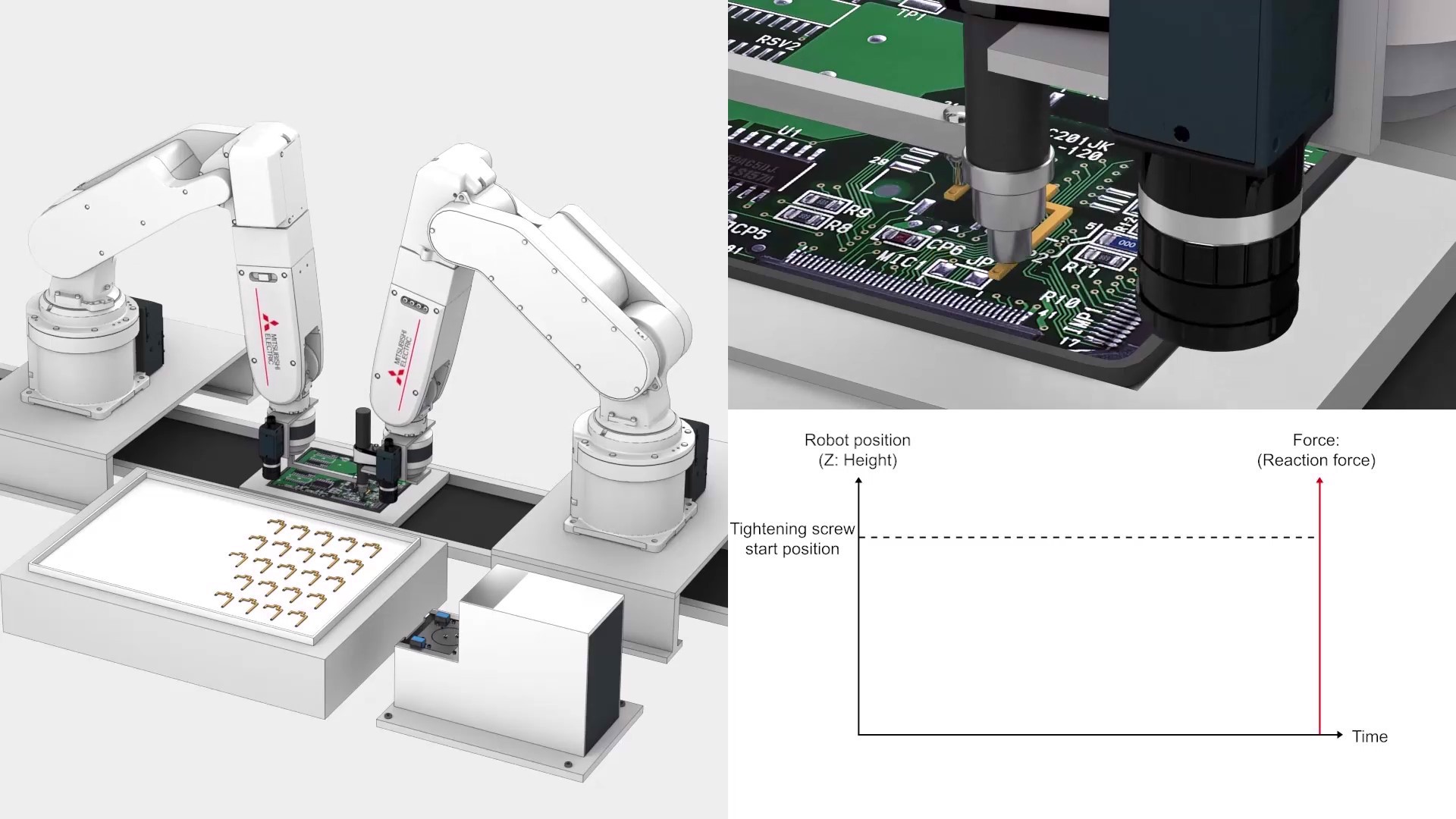Automating Electronic Board Assembly with Mitsubishi Electric Robots
Assembling electronic component details has always posed a high-risk challenge for component manufacturing plants, with the most significant challenge being the ability to locate component positions on the circuit board and control the tightening force to assemble these components together using tiny screws.

The solution provided by Mitsubishi Electric Robots, along with 2D image sensors, enhances the intelligence and efficiency of screw tightening.
1. VIDEO DESCRIPTION
Two Mitsubishi Electric Robots smoothly coordinate to move components (colored in yellow) onto the electronic circuit board and tighten the screws. 2D image sensors and force sensors are used to detect position errors of various components during the operation, preventing damage.
2. PROCESS DESCRIPTION
- Two robots collaborate to work on the electronic board surface.
- The robot picks up screws from the screw supply machine.
- 2D image sensors check the position of the components.
- The robot utilizes vector calculation methods to determine the working position and moves the screwdriver close to the offset position.
- Force sensors detect positioning errors and control the pressing force during screw tightening.
- The screw-tightening device is attached to the robot's arm to tighten the screws.
- The operation process is adjusted to automatically avoid collisions between the two robots and surrounding equipment.
3. KEY BENEFITS
- Prevents simultaneous rotation of components during screw tightening.
- Fixes the component position during the screw tightening process, even for lightweight components.
- Supports screw tightening at angles.
- A 6-axis robot assists in screw tightening from various angles, including challenging positions like square edges, enhancing process flexibility and efficiency.
- Synchronizes motion with screw insertion, using force sensors to control both pressing and tightening forces simultaneously.
- Flexible component transfer operation using two robots to handle and position lightweight components, such as electronic circuit boards.
- Avoids collisions and clashes without pre-programming, thanks to real-time monitoring, increasing flexibility and reducing programming time.
- Protects circuit boards and screws from damage by using force sensors to detect abnormalities and stop movements to avoid component damage.
4. OUTSTANDING ADVANTAGES
- Setup time savings up to 20 times compared to manual methods, with accuracy reaching 0.05mm, thanks to 2D camera sensors and the automatic calibration feature of the smart plus card.

|
Old method (Manual calibration) |
Setup time(min) | 20 |
| Accuracy(mm) | +- 0.2 |
|
Automatic calibration feature:
|
Setup time(min) | 1 |
| Accuracy (mm) | +- 0.05 |
With the solution of 2D image sensors and Mitsubishi Electric AI Robots, the production of small components in component manufacturing plants not only ensures quality control but also achieves reliability and optimal performance. This is a crucial key to progress and innovation in the modern electronic component manufacturing industry.






